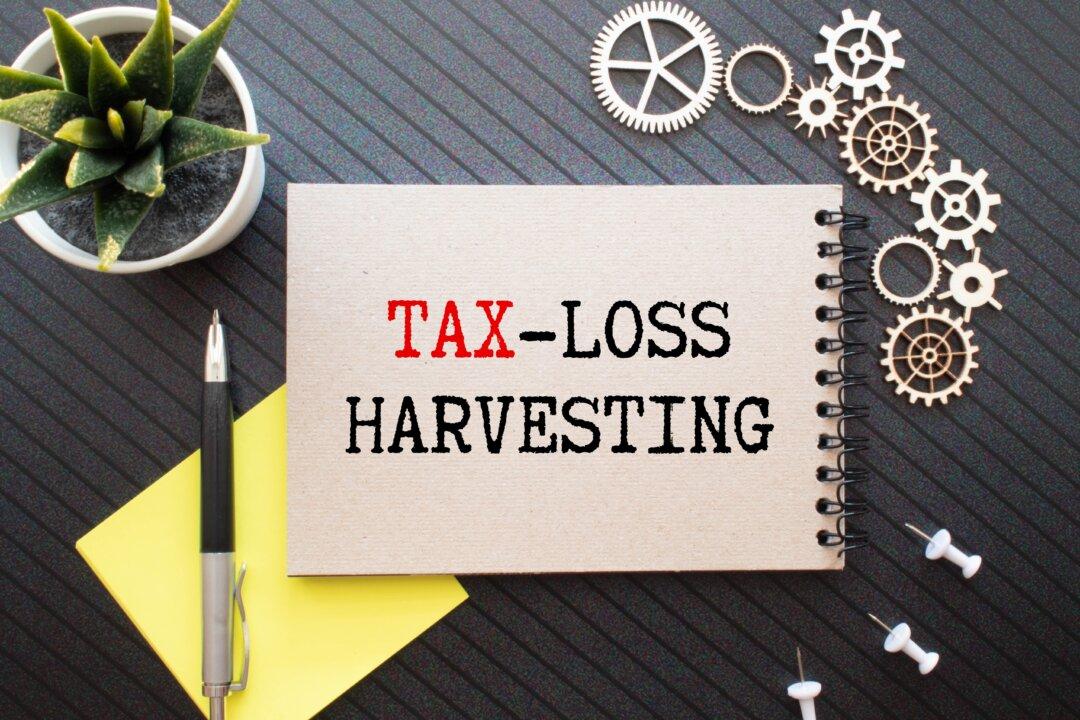In the midst of holiday celebrations and anticipation of the new year, taxes may be the last thing on your mind.
What Is Tax-Loss Harvesting?
Tax-loss harvesting is a strategy involving selling assets such as stocks that have depreciated in value in order to offset the capital gains from selling assets that have grown in value.Investors do this primarily to reduce or eliminate capital gains taxes.
How Does Tax-Loss Harvesting Work?
Let’s say you bought stock ABC and stock XYZ for $20,000 each in March. And in November, you sold stock ABC for $25,000. In this case, you’d face a capital gains tax on the stock’s growth or on $5,000.Because you held stock ABC for less than a year, you face the less favorable short-term capital gains tax rate. That ranges between 10 percent and 37 percent for 2024, depending on your income tax bracket.
So at the higher end, you’d be looking at a $1,850 capital gains tax for the sale of stock ABC (37 percent x $5,000).
But, suppose stock XYZ went down and you sold it for $10,000. That’s a $10,000 loss ($20,000 minus $10,000).
And because your $10,000 loss is greater than your $5,000 gain, you won’t owe a tax on your capital gain. You offset the entire gain.
But there’s more. When your losses are greater than your gains, you’re allowed to use what’s left over to offset up to $3,000 of your ordinary taxable income for 2024.
In this scenario, what’s left over is $5,000. So you can deduct the full $3,000 from your taxable income.
At the highest tax rate of 37 percent for 2024, you could be looking at an additional $1,110 in savings (37 percent x $3,000). Combine that with the capital gains tax you’ve avoided and you’re looking at potential tax savings of $2,960 ($1,110 + $1,850).
Wash-Sale Rule Implications
Tax-loss harvesting can be highly beneficial. But there are important rules you must follow.If you take a loss from the sale of a stock for tax-loss harvesting purposes, you must stay out of that stock for 30 days. Otherwise, you’d violate the wash sale rule.
So if you buy new shares of that stock 30 calendar days before or after the sale, you can no longer claim the loss on your taxes. And the loss will be added to the cost basis of the new stock. But there could be some potential benefits.
Say you bought stock Alpha for $1,000 in April and sold it for $800 in October. You take on a $200 loss. But in November, you buy stock Alpha again for $1,400. You’ve made a wash sale. So you can no longer claim the $200 on your current-year tax return.
But the loss is added to the cost basis on the repurchased stock. So in this case, that raises the cost basis to $1,600 ($1,400 + $200). So if you sell the stock later for $2,000, then you’d owe capital gains tax on $400 instead of $600.
Tax-Loss Harvesting and Portfolio Rebalancing
One reason many advisors suggest you engage in a tax-loss harvesting strategy toward the end of the year is because it’s also the time you may be rebalancing your portfolio.Portfolio rebalancing starts with taking a look at your asset allocation. This is the blend of stocks, bonds, and other assets designed to help you meet your long-term investment goals.
So say your portfolio is supposed to be 60 percent stocks and 40 percent bonds, a mix that many financial experts believe can capture returns while minimizing risk.
But stocks have seen a major rally recently, so your portfolio may be heavy on stocks. Say the stock value of your portfolio moved up to 70 percent and your bond value remained at 40 percent. A future decline in the stock market and volatility can leave your portfolio open to severe risk. But you can rebalance your portfolio to bring it back to its set asset allocation.
This would involve selling some stocks and buying more bonds to bring your asset allocation back to 60 percent stocks and 40 percent bonds.
But because selling stocks that have grown in value triggers capital gains taxes, this may be the right time to also incorporate a tax-loss harvesting strategy.
Nonetheless, it could be beneficial to consult a tax professional when undergoing tax-loss harvesting and portfolio rebalancing strategies.








